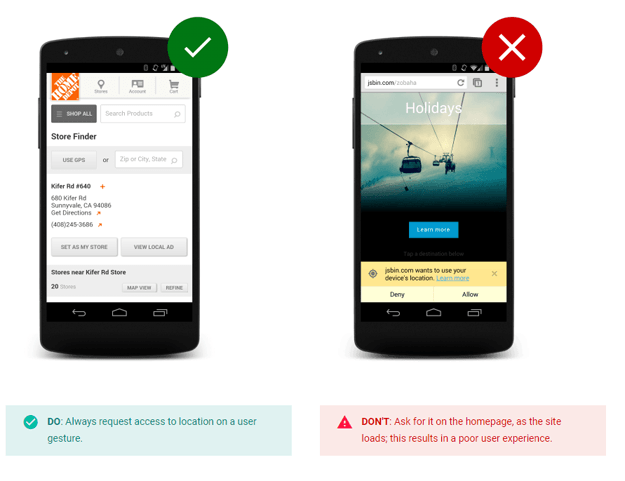Location and Personalization: Creating a Geotargeted UX

The savviest brands are fully immersed in the idea of personalization and delivering content that reflects customer interest and tailors their journey through a website accordingly. It has reached the point that this kind of experience is no longer a "wow" factor for customers; instead, personalized online experiences have become an expectation.
For instance, an ecommerce site can, using a visitor's previous Web history, serve a different experience for an individual who has been searching for "shoes" than for someone who has been searching for "men's dress shirts."
However, adding one single factor can make that journey even more personal: location.
In addition to helping to provide a better user experience (UX), location-specific content is also more appealing to other local sites - making it a gold mine for outreach link building on local news, business and lifestyle sites.
Shoes that are popular in Dallas, Texas are not the same brands and shoes that are popular in the Pacific Northwest or New York City. While some of this customer taste can be revealed in previous browsing history, simply tailoring the experience to their location can make a huge difference.
Beyond Landing Pages
As with many aspects of personalization, this goes beyond a landing page, and bleeds on to your overall website experience, including calls to action, images and promotions.
Brands also need to consider targeting SEO and PPC campaigns regionally and even locally to cities and areas where specific interests lie.
For example, shoes.com could redirect a visitor from the pacific northwest to shoesnorthwest.com (or northwest.shoes.com). The user might find a wider selection of Keen's and other sandals and hiking shoes than they would at say shoesnewyork.com.
The Where of Information
If a user has location services enabled, enterprises can leverage this for personalization in several ways. This can be done by using the location data already available through Google and other search engines that users have already authorized to use their location to enhance their search experience.
A website can also ask the user permission to use their location at the beginning of their first Web journey with your site, thus personalizing the experience for those who arrive via direct traffic instead of through search or other organic methods. This is something that is relatively easy to set up. Often, shoppers who want a more personalized experience won't object so this request, and will opt in. Google, however, does not recommend asking for permission immediately on the homepage as it may result in a poor user experience (and doing so might impact rankings).
(Image Source)
If the visitor has previously visited your site, you already have their location data in the channel, and can use it to further customize their experience along with what they have purchased before, and how they progressed through the marketing funnel before. This shortens their journey to purchase, making it easier every time.
If your company has re-marketing campaigns in place you can further customize the content of your ads based upon their actions on your site, their location, and whether or not they have made a purchase yet. That makes for some very targeted marketing campaigns.
The Reality of Location Data
The reality is that your business probably already has a great deal of information about your customers' location, and even the location of potential customers. This data can be collected not only from your website data, but also from social listening to your many social media channels and some simple analysis. Facebook Insights, for example, breaks down a Page's fan base by indicating where the profiles that have Liked your page are located by country, city and language). Questions to ask of this data include:
- Where are our customers coming from?
- Is this where we expect them to come from?
- What locations are we not optimizing experiences for?
- How can we optimize those experiences and attract more customers?
- What user locations convert less often?
- Is there a clear link between locations with lower conversion rates?
This can include the revision of marketing persona, location targeted PPC campaigns, and widening the top of the marketing funnel in that area using content and other inbound marketing techniques.
One of the most important parts of your data is your customer location, and you can use it to better personalize their experience. Some methods are easier to implement than others but all of them can be worthwhile.
Are you using all the data you already have in your channels to give your customers the best experience possible?








